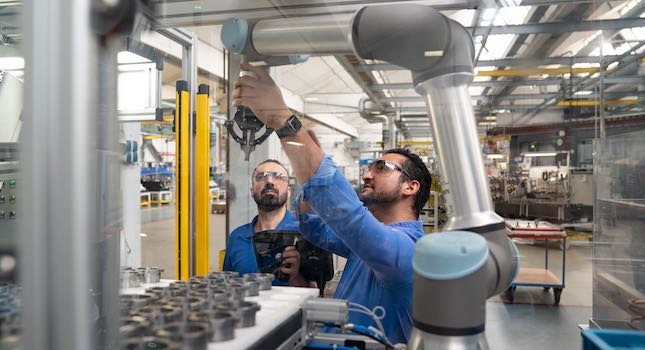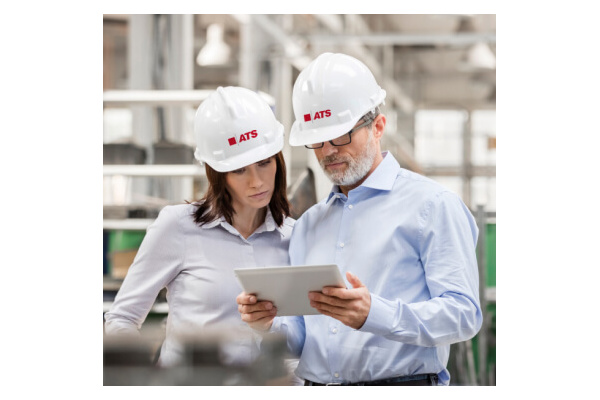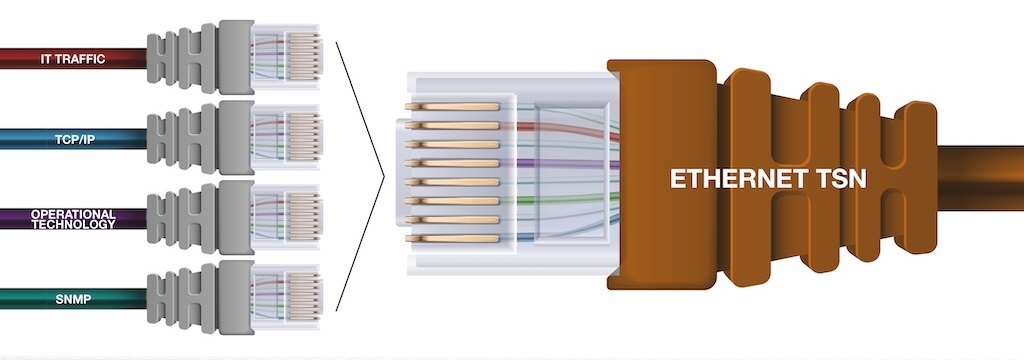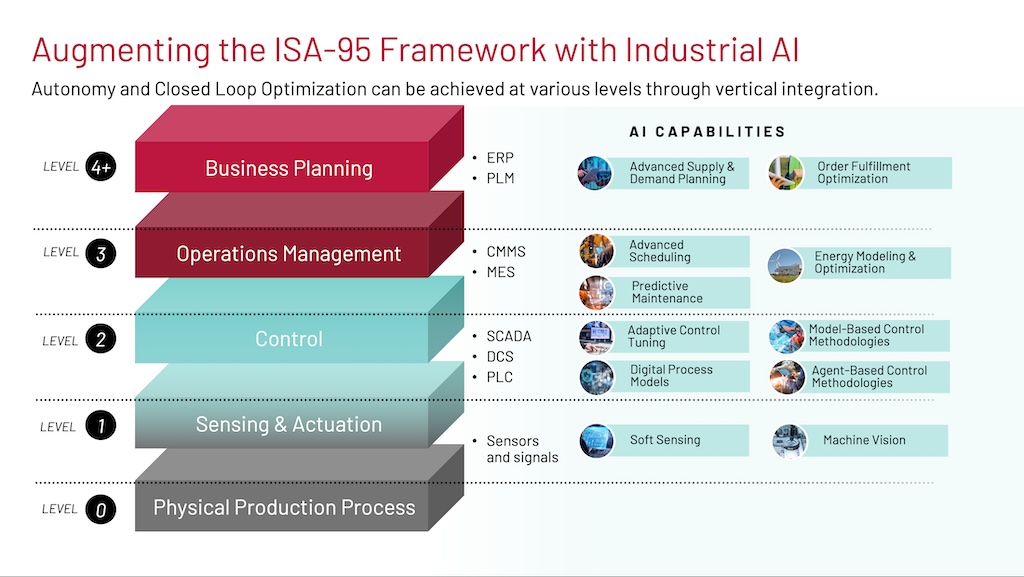There are many reasons to rent air compressors and compressed air equipment. They range from the need for temporary air while on-site units receive maintenance to fulfilling extra demand for compressed air due to a special project. Whatever the reason for renting, once the decision has been made the creation and use of a detailed checklist can save time, money and a lot of aggravation.
There are many reasons to rent air compressors and compressed air equipment. They range from the need for temporary air while on-site units receive maintenance to fulfilling extra demand for compressed air due to a special project.
Whatever the reason for renting, once the decision has been made the creation and use of a detailed checklist can save time, money and a lot of aggravation. Further, it will better enable the equipment supplier and plant personnel to work together to successfully complete the project.
In general terms, the checklist should be comprised of five main areas:
-
Determining and communicating the complete scope of the equipment needed.
-
Identifying an appropriate location to place the equipment.
-
Assessing the criticality of the role that the rental equipment will play.
-
Identifying any environmental, health and safety (EH&S) issues that need to be addressed.
-
Arranging additional support services.
-
Equipment need
Determining exactly what equipment is needed is a seemingly simple task. After all, compressed air isn’t that complicated and this question can usually be answered by stating volume and pressure. However, there are more decisions to make with regard to the equipment than volume and pressure.
Even the simple task of communicating the needed volume can be misunderstood. Considering the critical nature of the information that is required to define equipment needs, the rental compressor supplier’s ability to provide a dedicated, experienced team to assist in determining specific requirements should be a top priority for the customer.
The quality of the compressed air must also be a consideration. In today’s rental market, compressed air is available with or without traces of cooling oil. The idea of 100% oil-free air is becoming increasingly critical in maintaining operation of equipment and projects.
Oil-laden air contaminates pneumatic systems, fouls critical instrumentation orifices and produces harmful environmental condensate. Compressed air can be provided at many temperatures, pressure dew points and levels of filtration.
External desiccant dryers can be provided to remove moisture down to pressure dew points as low as minus-100 F and onboard filters can filter compressed air down to 0.01 micron. Rental equipment suppliers should be able to furnish heat exchangers, chillers or boilers to produce compressed air temperatures that comply with most any requirement.
The key concept here is to first determine exactly what is needed, then ensure plant personnel and the rental equipment supplier are speaking the same language. Detailed specifications covering the quantity, quality, pressure, temperature and dew point of the compressed air needed must be clearly stated and understood by both parties.
Find the right location
Once the equipment requirements have been determined, a suitable operating location must be identified. The supplier of the rental equipment should provide a drawing showing the footprint of each unit including the associated operating space.
If the required compressed air volume results in a rental package comprised of several compressors, consider the placement of the units with an eye for access to all of the equipment.
If several units are going to be placed in a blind alley, will all units be serviceable for refueling, assuming they are diesel-driven? What if one of the units has to be removed, will the placement of the equipment allow this to be done?
Consider what other activities will be taking place during the course of the rental. If the rental air compressors have to stay in service for a longer period than expected, will they be in the way of other scheduled activities? All of these things need to be considered when placing the equipment.
Availability of electrical service is important when selecting a suitable site for the rental compressors. Even if the compressors are diesel-driven, electrical service is required to run ancillary equipment, or for running winterization devices on the compressors during cold weather.
Diesel-driven compressors often require fuel and block and oil heaters along with heat tracing when ambient temperatures are expected to be below freezing. The rental compressor supplier should supply the appropriate electrical distribution to handle these power requirements. Electrical requirements need to be understood up-front and considered when selecting an appropriate location.
All this planning is useless if the compressed air from the rental units cannot be connected to where it is needed. One of the requirements, when decisions are being made on where to install rental compressors, is to decide how the connection will be made to the plant air system.
Considering ‘what ifs?’
It is important to consider what happens if there is a problem with the rental units. In the case of diesel-driven equipment, a late fuel delivery could render the units inoperative. If it is installed in an unprotected area, one of the temporary 3-inch compressed air lines could be damaged by a fork truck driver. The question of "what if" needs to be considered. Frequently, the best solution is to include backup equipment into the compressed air package rental agreement.
For extremely critical applications, backup equipment set for auto-start should be considered. As soon as plant air pressure drops below the set point, the backup unit will start without an operator being present. This is true whether an electric-driven or diesel-driven unit is selected as the backup.
Other options that should be considered are having the provider of the rental air compressors supply extra capacity fuel tanks and have the ability to provide around-the-clock, experienced, on-site technical support.
In all cases, this question has to be asked: "How critical is the need?" When this question yields an answer that puts the rental equipment’s performance in a category reserved only for the most serious situations, it is important that plant personnel and the equipment supplier explore the options available in both equipment and support personnel.
Safety an important issue
While compressed air equipment may only be on site for as little as one week, many of the same considerations need to be given to this equipment as are given to permanent installations. Noise, exhaust and fuel storage are issues that need to be considered, and premium rental equipment will be designed with environmental considerations in mind.
Many premium rental units are designed to include a spill-proof enclosure. If a fluid carrying line fails, the liquid (fuel, oil, coolant) is contained within the compressor itself. If the rental units do not include this type of enclosure, the installation of some other type of containment should be considered prior to equipment placement. The same considerations should be applied to external fuel tanks.
The installation of temporary compressed air hoses has a few inherent safety concerns. The biggest being the use, misuse or absence of whip-checks. The most dangerous part of a compressed air hose is its connection to a coupling. With the proper use of whip-checks, this concern is eliminated.
From a pressure safety standpoint, all rental compressors are supplied with pressure relief valves. Generally, these valves are installed inside the compressor enclosure before the outlet valve. These relief valves are installed and set to prevent over-pressurization of the compressor’s internal components. This should also be within the specifications of the plant air system. It is worth checking before renting the equipment to ensure all pressure ratings are acceptable to all piping and equipment that will be served by the rental units.
Upon delivery of the equipment, an operator training session should be provided by the equipment supplier and attended by plant personnel that will be operating this equipment. Operator manuals for all of the equipment being delivered should be provided.
Adding support services
With the equipment selected, and installation details sorted, the last area of major concern is the arrangement of support services. Many times, the first item on the list is to coordinate the availability of appropriate lifting equipment to unload and place the equipment
Sometimes the equipment can be left on trailers and simply parked in place. The equipment will generally require more room when left on trailers. If it is to be unloaded, the equipment supplier should be able to provide all the required lifting specifications prior to the day of delivery.
If the units to be rented are diesel-driven, the list should include refueling arrangements and a refueling schedule. If large external fuel tanks are not to be used, it will be important that the fuel supplier understands how critical it is to arrive on schedule.
When creating an individual rental checklist, these five areas could be expanded to fit the individual needs of the plant and the specifics of the application. Whatever the case, creating and following a detailed checklist prior to renting compressed air equipment will yield the best chances for a successful and trouble-free project.
The Bottom Line…
-
Determine the quantity and quality of compressed air required.
-
Rental units need space for access and a close location to the plant air system.
-
Spill-proof enclosures should be provided for compressor fluids and fuel.
-
Author Kuirt White can be contacted at (713) 512.6756 or at [email protected] .
-
For more information, access the company website at aggreko.com .
-
Four 1500 cfm compressors supply compressed air at a food processing facility.
A truck-mounted, diesel-driven , oil-free air compressor is paired with a 500-gallon double-walled fuel tank on a trailer.
ASHRAE effort focus is sustainability
The American Society of Heating, Refrigerating and Air-Conditioning Engineers has launched a new campaign emphasizing its role as "the engineering engine that drives sustainability."
As part of ASHRAE’s stronger focus on its involvement in green buildings, the Society has introduced a new logo, theme, Engineering for Sustainability, and Website,
"ASHRAE has long provided ‘engineering for sustainability’ by applying its diverse technology assets to the sustainability movement in energy efficiency, indoor environment and industrial processes," Ron Jarnagin , chair of a committee developing a roadmap for sustainability for the Society, said. "With growing focus in the industry on the green movement, we need to emphasize that ASHRAE is the engineering engine that drives sustainability."
Jarnagin noted that the Society’s recent efforts include publishing and working on the Advanced Energy Design Guide series, Standard 90.1 , which contains a section guiding designers on how to meet requirements for building rating programs, and the ASHRAE GreenGuide , all part of an ASRHAE green "toolkit."
SME, AME launch Lean certification
A new Lean Certification program has been announced by the Society of Manufacturing Engineers, the Association for Manufacturing Excellence, and The Shingo Prize. The program is being managed by SME.
The new Lean Certification will provide manufacturing professionals with credentials illustrating their knowledge and application of Lean principles. During the conference, candidates will be able to submit applications and begin their portfolio and mentoring processes. The exam portion of the program is scheduled for launch in March 2006 with the first certification exams being offered in Los Angeles during SME’s Total Manufacturing Experience .
There are three levels of Lean Certification and one Industry Knowledge Certificate. The Knowledge Certificate is an exam-only option that measures knowledge of the basic principles of Lean. The Bronze level recognizes tactical knowledge of Lean focused on localized deployment and application. The Silver level focuses on integration of technical Lean activities with organizational restructuring necessary. The Gold level represents the complete Lean transformation of a business organization.
For additional information on the new industry standard for Lean Certification, contact Kris Beauchamp at (313) 425-3122 or send an e-mail [email protected] type "Lean Certification" in the subject line. Visit the SME Website at
Caterpillar CEO Owens to deliver keynote at NMW
Jim Owens , chairman and CEO of Peoria, IL-based Caterpillar Inc., will headline the 2006 National Manufacturing Week Conference , to be held March 20-23 in Rosemont, IL. Owens will deliver remarks on "Manufacturing Leadership in the Global Marketplace" — focusing on building business in a world market.
"We are extremely proud to present Jim Owens as a keynote speaker at the 2006 National Manufacturing Week Conference," said Kel Marsden-Kish , industry vice president, National Manufacturing Week. "His strength of leadership, keen business insight and depth of experience make him an extraordinary speaker and shining addition to our already stellar Conference line-up."
Caterpillar posted 2004 sales and revenues of $30.25 billion, is a technology leader and the world’s leading manufacturer of construction and mining equipment, diesel and natural gas engines and industrial gas turbines.
Owens was elected a corporate vice president and named president of Solar Turbines Incorporated, a San Diego subsidiary. In 1993 he returned to Peoria as vice president and chief financial officer with administrative responsibility for the Corporate Services Division. To register for National Manufacturing Week, visit
-



